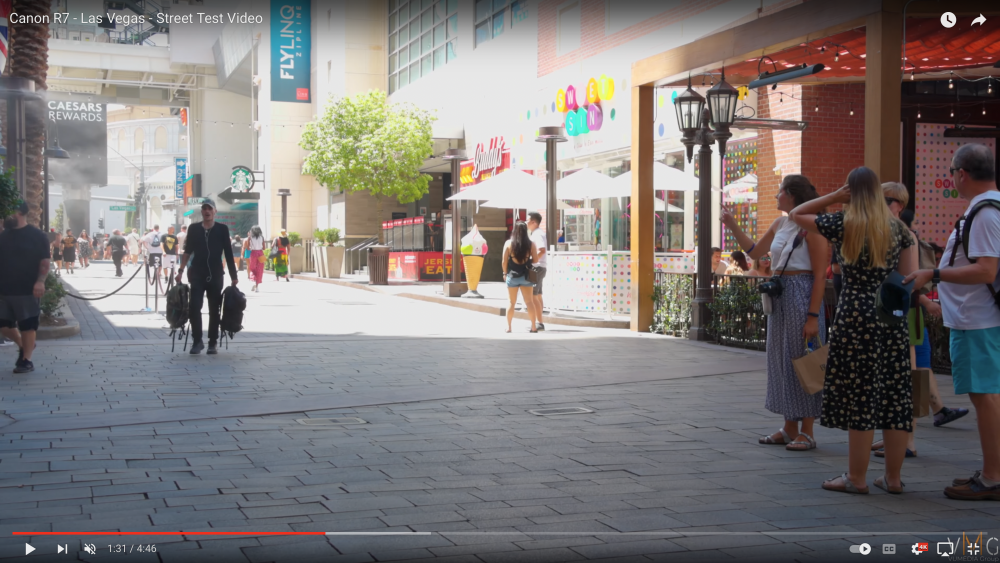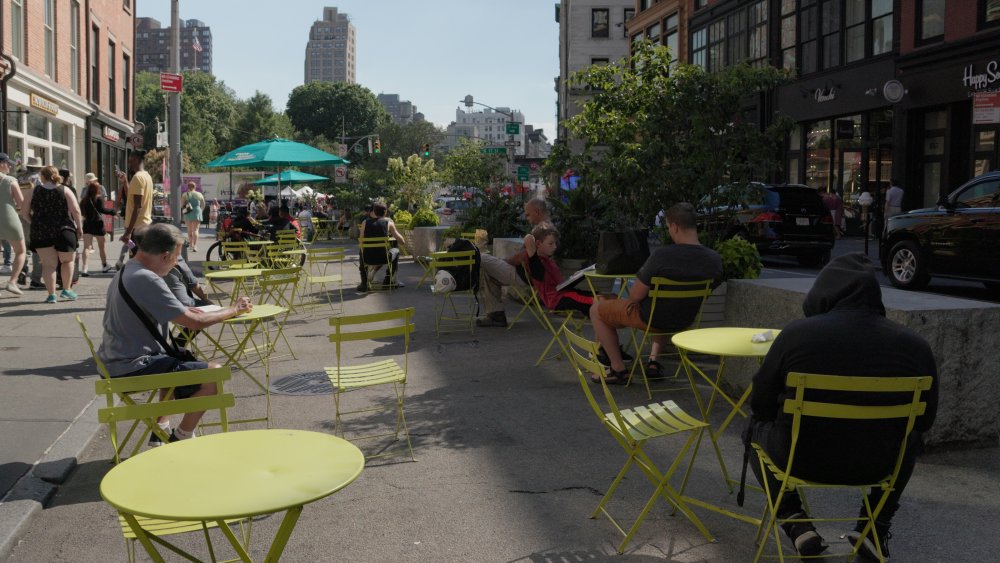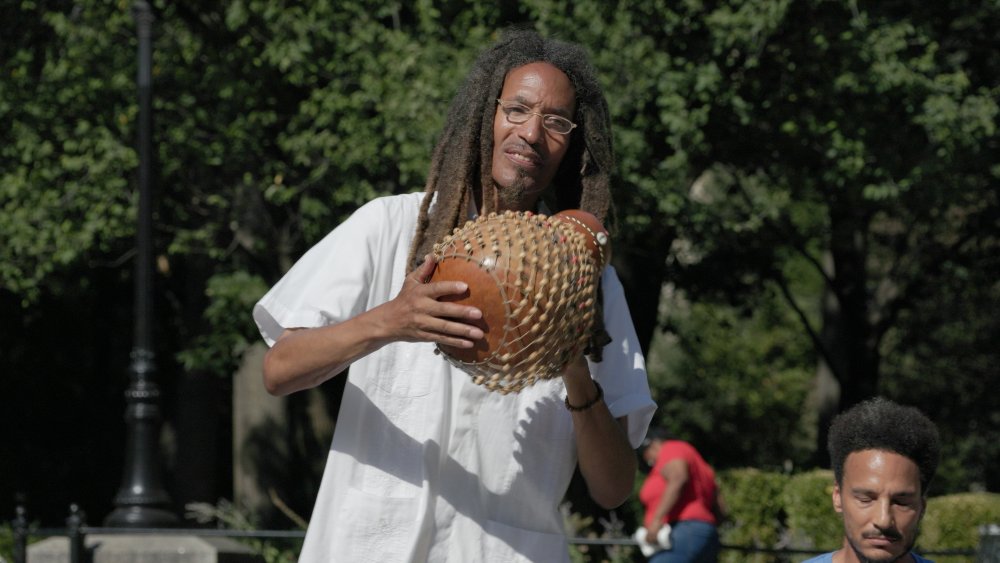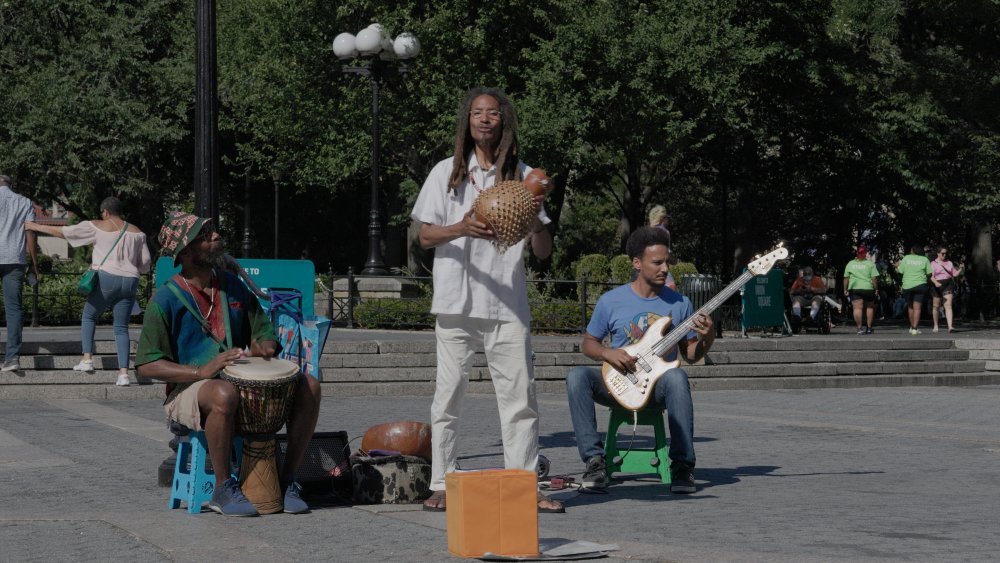
markr041
Members-
Posts
892 -
Joined
-
Last visited
Content Type
Profiles
Forums
Articles
Everything posted by markr041
-
Yes, I retreated from the max 200 Mbps. But 180 Mbps worked with no glitches over many shots.
-
I was out in the sun for over three hours shooting that video without ever turning of the camera. No overheating, although most of the sots were around 10 seconds, some 30 seconds. In this video I also used the upped Mbps, with longer shots of many minutes. Again, no overheating.
-
GoPro labs enables upping the HEVC bitrate to 200 Mbps. So, 10bit color, 5.3K 60 fps, 180-200 Mbps.
-
Low-Light Test Flat color, AWB, 5.3K 30p. No Hypersmooth, max ISO 400. Wide.
-
Shot at Dusk with AWB, Flat Color and Wide with Hypersmooth on. 5.3K 60P rendered in 4K 60P.
-
Here is a test video shot at 5.3K 60P with Linear + Horizon Leveling, 10bit color, Flat Profile, Native WB. Thus what you see is my grade:
-
The DJ1 is $329; the Hero 11 is $399 with FREE subscription. That price difference does not seem to be so significant given the very real advantages of the Hero 11. The 120 Mbps bitrate (HEVC) and 10bit color are available for all modes.
-
Doesn't the Canon Speedbooster have a blue dot problem? Anyway, given the above and the enormous price differential between the Canon and Viltrox Speedboosters, I bought the Viltrox just before it was banned. I shot this 4K HDR test video in the dark using the Canon EF 35mm f2.0 lens, now becoming an f1.4 lens:
-
Just to report: the 4K 60P from the Fold4 looks terrible - mushy and over-sharpened. The stabilization of course works great, and motion is good. But the IQ is so bad I will not post it in my channel. I think the 4K is pixel binned from the big sensor. The 8K is not, and looks great. Just have to put up with the 24 fps.
-
Exactly. It is in part why GoPro Hero 10 in-camera stabilization is so much better than every other camera (except now the Samsung). On DOF: any camera that limits what one can achieve artistically is problematical. So not being able to shoot shallow DOF clips is a real limitation. On the other hand, not being able to walk and shoot with a camera without accessories or a big loss of resolution is a limitation.
-
1. The video is not "fake." What is wrong with you people? 2. The 8K is indeed from the 50 megapixel sensor, and since 8K requires over 33 megapixels, the 8K is obviously not pixel-binned (but the 4K is). The 8K is from a crop of the sensor because the sensor has more pixels than is required for 8K. 3. The extra pixels, from the above, could be used for the extra room needed for digital stabilization. Given how good the stabilization is, way better than any optical stabilization or sensor stabilization, I can believe there is at least some electronic stabilization. 4. The Samsung has extra, more powerful, stabilization setting; I had interpreted that as adding electronic. I did not use that setting, just the standard stabilization. 5. Samsung only claims its wide lens has optical stabilization. They make no statements that I can find about electronic stabilization, let alone an in-camera gimbal (really?). But I agree, te stabilization is too good to be plain optical. 6. Sony cameras, like the fx3, with gyro do have a setting that uses the gyro along with IBIS and/or OIS while shooting. It is called "Active" stabilization. But in no way can you walk and shoot with these cameras using that setting. You can futher smooth with catalyst Browse in post using the gyro data even when shot using Active stabilization. 7. The Fold4 does not have 4K at frame rates above 60. 8. Whatever the form of stabilization, it has limits. You can hit those with mechanical stabilization (IBIS, OIS) or digital. So showing the limits does not identify stabilization type. Walking briskly with theh camera, as in the video, is a pretty severe test of the stabilization system. 9. If you want to see the video I uploaded from Vimeo do NOT download the "8K UHD" version from Vimeo; download the "original" upload (which is 8K of course). The Vimeo 8K version is compressed by Vimeo and is not what I uploaded (and is much smaller). I may try 4K60 stabilization tests. At 60p the high shutter speeds are less of a problem. 60p is not an option for 8K.
-
Cmon. Go to the Vimeo site and download the original - it is 8K. The same 8K video was uploaded to YouTube. I have no control over what YouTube streams. I do not like being called a liar, particularly when I went out of my way to post on Vimeo so folks could download the un-recompressed 8K original. It is people like you that steer away posters.
-
Crop mode 4K 60p is great. https://youtu.be/b0xOKtybpPg
-
First, I agree with you that a backlit subject in bright sun is the worst case scenario. And I respect the idea that for run and gun you cannot always select the best lighting scenario and one has to make choices given the camera DR is less than that of a scene. But I think in your video you did not protect highlights in general, even when the camera could handle the dynamic range (if shot in Clog3). There are lots of hotspots all over your video - even the waterfall water flows had hot spots. Maybe you were deliberately making a video to show how ugly hotspots are - and you succeeded. I don't think that you were deliberately making as ugly a video as possible to dis the R7. Rather I think you underestimated how the camera handles extremes of light in your exposure choices because you had too little experience with it. I have uploaded one screenshot (4K monitor, 4K video) of a frame from your video where there is a sunlit area and an area shaded from the sun. You chose to allow the sunlit area to be totally blown out, favoring the shaded area (for no obvious reason - there is absolutely nothing interesting going on in the shaded area). Yes, the shot is really ugly - half of the picture is blown out! But you could have prevented the blow out in your exposure choice and increased the mid-tones for the shadowed area. But you never gave it a chance. I have uploaded a similar (ungraded) scene from my video where again half of the scene is in bright afternoon direct sunlight and the other part is in shade due to a building shielding the sun. But I chose to expose so as to protect the highlights. There is nothing blown out, and there is color (and some noise) in the shaded people (I applied no changes other than the transform from Clog3 to REC709 for this frame grab - I could make this shot look better by just a few adjustments in the shadowed area). But this unadjusted scene looks a heck of a lot better than yours, right? Btw, there are plenty of backlit scenes in my video, shot directly into the (low-in-the-sky) sun - you just did not notice because there are no dominating-scene blowouts. I have shot with the S5, the R5, the BMPCC6K, the fx3 - hotspots look ugly from all of them. Specular hotspots, fine - but half of scenes blown out? Really? Handling highlights does not mean just handling blow outs - it means how highlights from a capture of 11 stops of DR are transformed to 5-6 stops (REC709). Yes, the APS-C sensor of the R7 has a smaller dynamic range than that of the best full-frame cameras, and it's shadow areas have more noise compared with full-frame. But shooting Clog3 and using proper IDT transforms gives you a lot more latitude than you evidently thought in your exposure choices. Btw, how exactly did you transform Clog3 to REC709? - the editing transform handles blow outs and highlights just as importantly as the camera.
-
My user experience. The above frame grabs are from this video, shot in harsh sunlight all the way. Just a simple 8bit REC709 transform from 10bit Clog3. Plenty of headroom to play with for what one might like the final look to be. And suitable for an HDR version. Sorry there are no beauty queens, but then there are no ugly highlights either. Did I do something wrong?
-
In the above I don't mean to be so "harsh" on the OP...But maybe working with the camera for more than a week might yield very different conclusions about highlight handling.
-
I'm sorry, but the harsh highlight conclusion is wrong to me (overblown!). I have shot with the R7 for more than a week - two months. I have found the dynamic range to be quite good, and the handling of highlights on par with the R5 and the S5 - which I have also shot with. And the fx3. In the posted video it is clear that many clips have blown highlights - in the the very first clip the crown is blown. The highlights are harsh and ugly indeed. Blown highlights, however, are from overexposure - from clipping highlights when shot. Clipped highlights are not recoverable from any camera. They are caused by the videographer not watching the highlights and thus overexposing. There are blown highlights all over the video (including in faces). Yes, the video shows "harsh" highlights, but blown highlights - clipping - is never a fault of a camera. Let me show you two frames from a video I shot today in Clog3 on the R7 with the kit lens. They are from the worst possible scene - a man with dark skin wearing a bright white shirt facing a bright afternoon sun. There are no blown highlights on either the face or the shirt or any other bright white part of the clips. The clips are not underexposed. My "grade' was simply using the IDT transform in Resolve, from Clog3 to REC709. In all my experience I have not noticed any difference in the handling of highlights from the R5 or my Panasonic S5. And, yes, I could push up the luminance more with plenty of room - nothing is clipped in these shots. Skin tone is right on. Bright spots on the face are not blown spots. I'll post the full video when it is ready on YouTube, so you can see I am not cherry picking. The video was shot in harsh, bright sunlight and has plenty of highlights.. It does not look anything like the posted video from the OP.
-
These are demonstrations of a number of aspects of the R7 as a video camera that posters here have asked about, without talk. Use with the Canon EF S 18-135mm with power zoom attachment (look for one long zoom at 0:18): HDR at night, with RF 16mm, f2.8: Tests of human face/eye tracking, excerpted from a music video (the most challenging bits):
-
No, you cannot simultaneously use IBIS and lens OIS and employ gyro stabilization in post. This is because gyro stabilization reacts solely to camera movement. It cannot know how the lens is adjusting (OIS) or the sensor (IBIS) is adjusting to movement They cannot be coordinated as implemented now. In both Catalyst Browse and DaVinci Resolve, you simply cannot stabilize with gyro if the lens OIS or IBIS is on. The software will not even let you try.
-
And, for those complaining about the limited dynamic range of the R7 (from viewing REC709 video!), here is the HDR version of the trumpets video (which, of course, you can only view in HDR with HDR-capable viewers): This video will show in transformed (by YouTube) REC709 (SDR) if not viewed on an HDR-capable device. The SDR version is not bad.
-
No, the 180 degree rule does not work "fine" with gyro stabilization, as clearly stated by both BlackMagic, GoPro, and Sony and consistent with my extensive experience with gyro stabilization for all three camera brands. Blurring wreaks havoc with gyro stabilization. If done correctly, there is no way the warp stabilizer in DaVinci Resolve does better than gyro stabilization for the same camera. And, btw, gyro stabilization corrects rolling shutter. This is not too relevant for the R5, but it is for many cameras, including the BMPCC6K. For those who don't appreciate what gyro stabilization does, this 4K (shot in 6K) video shows the before and after of the walking and long telephoto shots (this does not prove that gyro stabilization is better than your preferred choice, however mistaken or not, but shows what it handles).






